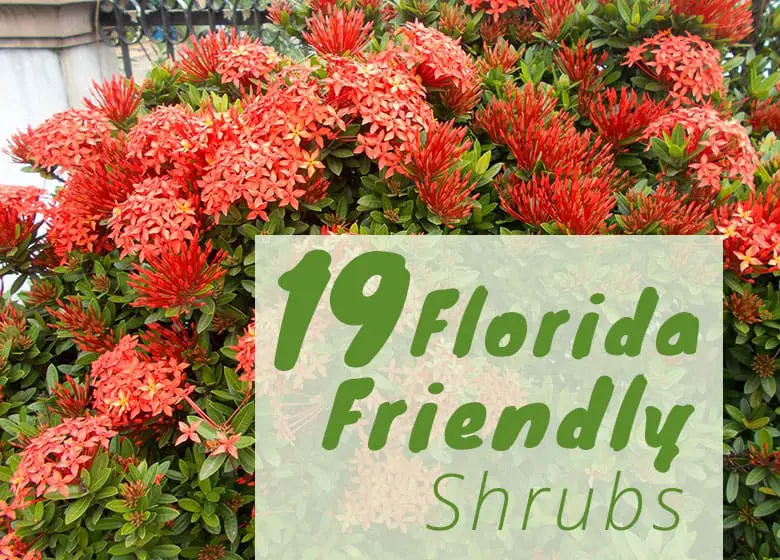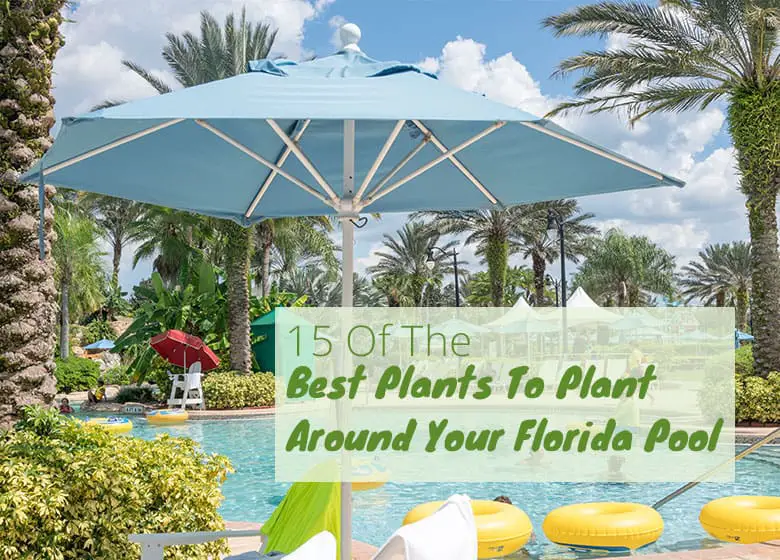
What are some of the Best Plants to Plant around Your Florida Pool?
Agave, Banana, bird of paradise, creeping jenny, croton, hosta, and Schefflera are some of the best plants to plant around your Florida pool. These are perfect for your pool because they print beauty to your landscape but they are also super easy to take care of and don’t add any extra work to your already long list of pool duties.
With Florida’s consistently warm climate, many people can enjoy their outdoor pool areas year-round, relaxing in sunshine and calming greenery.
When properly landscaped, a pool area shines with whatever design style you desire, along with trouble- and mess-free plants bringing their ambiance to the area.
Whether you desire privacy, color, a tropical feel or something else, there are a wealth of Florida-friendly and pool-friendly plants that are suitable growing in the area that won’t cause structural damage or have you spending your free time cleaning up their mess.
Read on because we breakdown the characteristics and preferred conditions for some of the best plants to plant around your Florida pool.
Popular Pool Plants
Choices are many and varied, when it comes to plants that are suitable used around a pool area, whether planted inside a screen enclosure or nearby in the yard. When selecting a plant, make sure the area provides the light and soil conditions the specific plant desires to prevent growth problems and know the plant’s mature size so you can plant in an area with adequate space.
Additionally, and most importantly, make sure the chosen plant’s root system won’t cause problems with the foundation around the pool. Shy away from plants that have aggressive root systems that seek out water like willows or Ficus.
Some common popular plants used around pools in Florida are listed below:
Agave
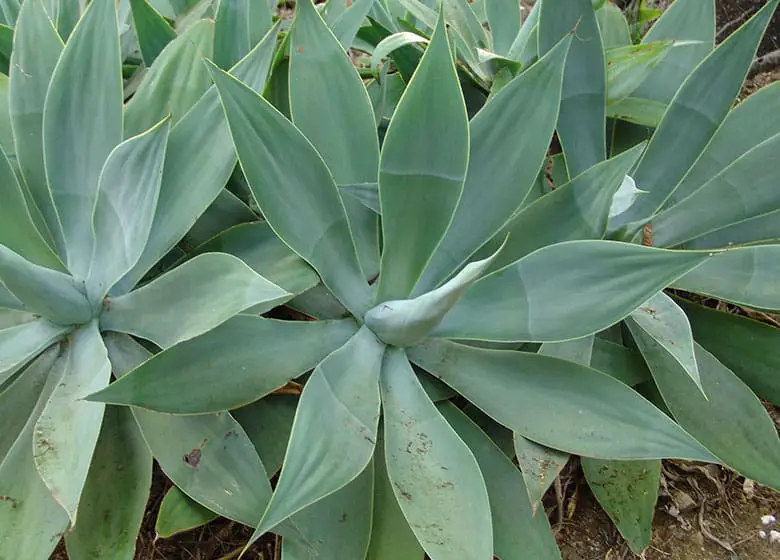
Agave (Agave spp.) are hardy plants taking the sun, heat and drought without skipping a beat. However, many types have nasty thorns and thorn-filled edges, making them not a good choice used in areas of the pool where people or children frequent.
One agave that grows slow and doesn’t have the nasty thorns is spineless century plant (Agave attenuate). It’s smaller than most agave, slowly obtaining a 3-foot width, making it suitable used inside or outside the pool area.
The spineless agave is quite attractive with blue-green leaves emerging from the center rosette and eventually forming a cone shape. It’s hardy in Central and South Florida, although those in northern regions can grow it in containers for winter protection.
Areca Palm
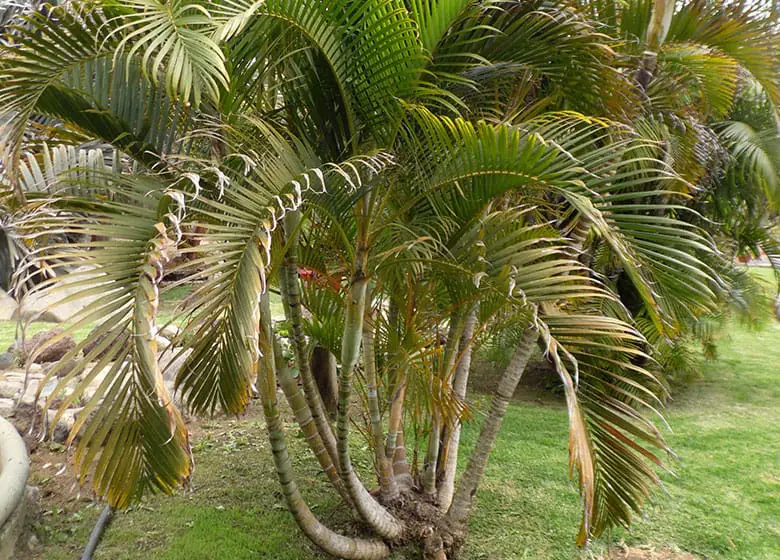
With its fine-textured feathery fronds and golden-yellow trunks, areca palms (Dypsis lutescens) make attractive additions to areas around a pool.
Its clumping nature makes it the perfect privacy plant and gives the area a tropical feel wherever placed. Give the palm room to spread, as it grows around 20 feet tall with a canopy spread of about 10 feet.
Those living in Central and South Florida will have no problems growing this beauty, but those in North Florida can grow it in containers for protection during winter.
They grow well in full sun to partial shade and in well-drained soil.
Banana
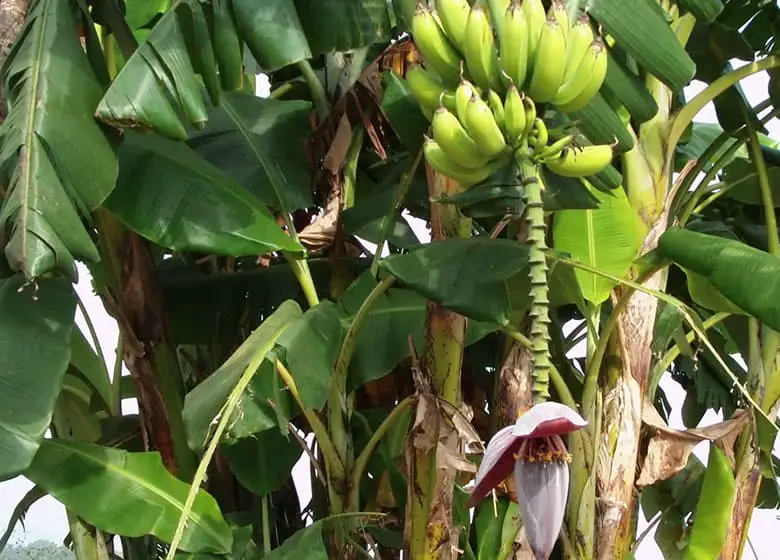
With their lush oversized leaves adding a tropical feel wherever used and the bonus of having tasty edible fruits, bananas (Musa spp.) work well used around a pool area.
Plants come in an array of sizes from tall varieties growing 25 feet tall, to smaller types growing around 5 to 6 feet tall. The trees will definitely give your pool area a taste of the tropics, especially when paired with other ornamental tropical plants.
‘Dwarf Cavendish’ (Musa acuminate) grows around 6 feet tall producing smaller sweet fruit. For a bit of color, pink velvet banana (Musa velutina) produces fruit that’s outer peel is bright pink.
Bananas grow well in full sun and fertile soil and grow throughout Florida, although can be damaged in a freeze. Cold hardy varieties include, Japanese fiber banana (Musa basjoo) and back Thai (Musa balbisiana) but produce inedible fruit.
Bamboo Palm
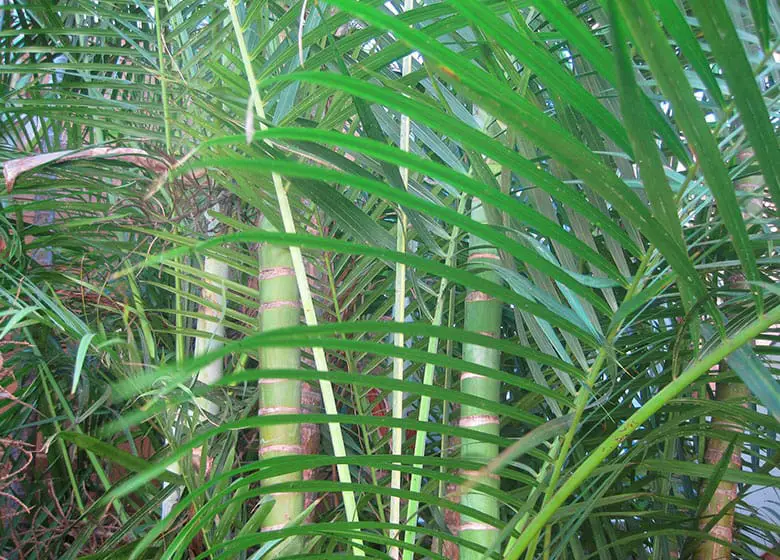
Bamboo palm (Chamaedorea erumpens) earns its common name from the flowing feather fronds atop clumps of thin green stalks resembling bamboo.
If you like the tropical effects regular bamboo gives you but you cannot have its invasiveness around the pool, then this is the palm for you. The palm grows 4 to 12 feet tall with a width of around 3 feet, making it a good choice for poolside planters located in partial shade.
It grows best in well-drained soil kept moist. Frost-sensitive, bamboo palms are hardy growing outdoors in South and Central Florida and those in colder northern portions of the state should grow it in containers for protection during winter.
Bird of Paradise
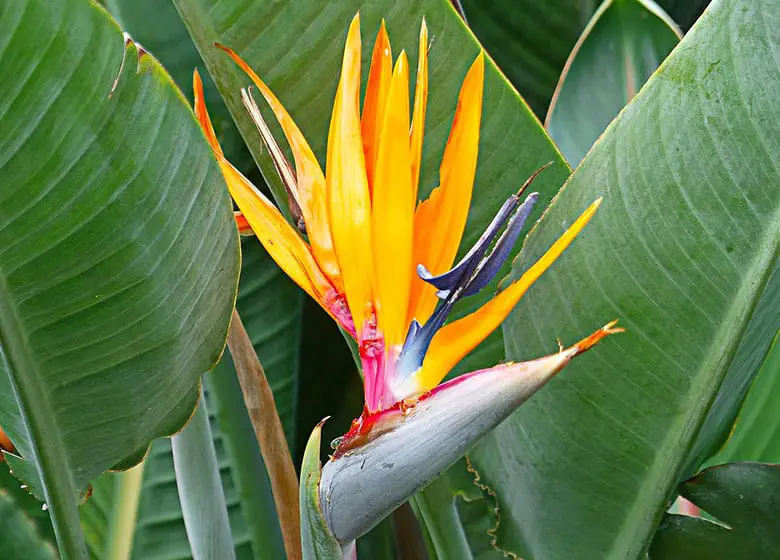
If you desire to pump up the tropical appeal around your pool area, you cannot go wrong using bird of paradise plants.
There are two types: white bird of paradise (Strelitzia nicolai) and orange bird of paradise (Strelitzia reginae). Both plants produce year-round flowers resembling a bird in flight, though the white bird’s flowers are blue and white and the orange bird produces orange and blue flowers.
Both have leathery green leaves, with the white bird’s foliage shaped like a 5- to 8-foot long banana leaf and the orange bird’s upright leaves around 18-inches long. Unless you have a very tall pool enclosure, it’s best to plant a white bird in the landscape near the pool as it grows 30 feet tall and 10 feet wide. On the other hand, orange birds work well used in a pool planter, growing around 3 to 5 feet tall.
Both plants grow well in full sun to partial shade, and in well-drained soils. White and orange bird of paradise plants are hardy in warmer areas of Central and South Florida and those in areas prone to freezes should grow in containers for protection.
Canary Island Date Palm
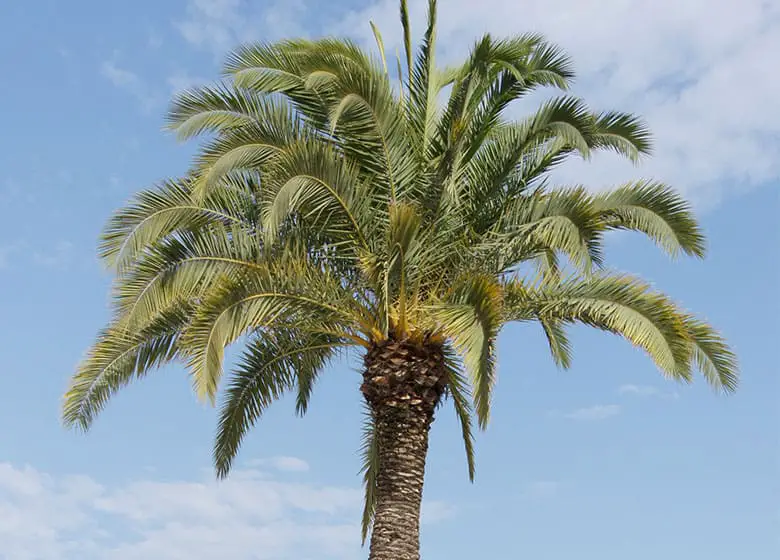
Canary Island Date palm (Phoenix canariensis) grows statewide and holds the honor of being the largest palm tree used to grace Florida landscapes.
Although the attractive tree that resembles a pineapple as it matures grows slowly, trees can reach a mature height of 60 feet with a trunk diameter of around 4 feet.
The palm’s large size makes it best used as an accent or specimen planted outside of the pool area and in landscapes on the larger size.
Additionally, plant the palm away from a trafficked area, as the long feathery fronds are lined in stiff 3- to 4-inch thorns. Canary island date palms grow best in full sun and in fertile well-drained soils.
Creeping Jenny
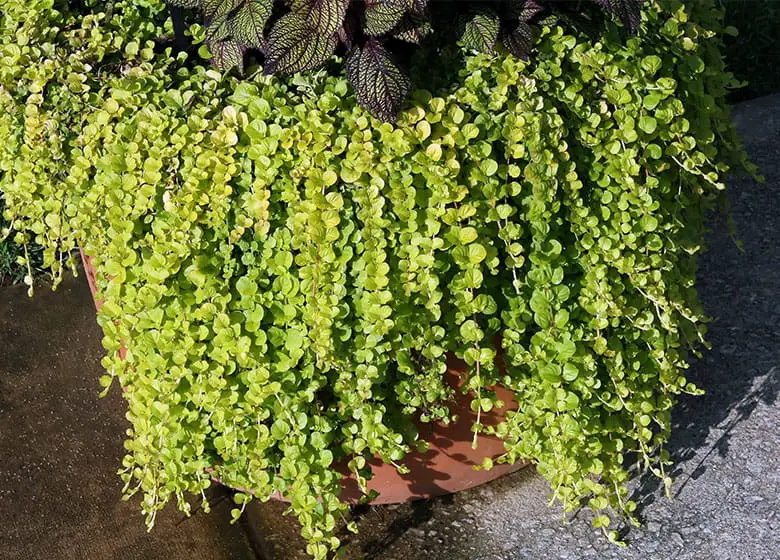
Creeping Jenny (Lysimachia nummulari) brings a bit of color and cheeriness to pool planters or containers used around the area with its golden-green, small round leaves.
The perennial is hardy statewide and forms a vigorous dense mat, making it a great choice used as a groundcover. It also adds texture and color when used in hanging baskets or containers, with its leaf-filled stems dangling over the sides.
Adding to the colorful foliage, in summer, masses of golden cup-shaped flowers cover the plant. Grow creeping Jenny in a sunny to partially sunny area and in rich, well-drained soils.
Croton
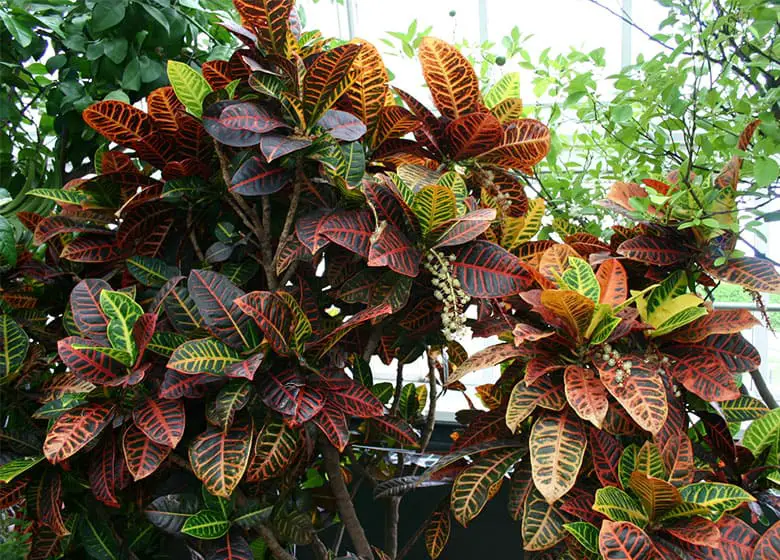
Nothing quite brings the year-round bold and robust colors in pool areas like tropical crotons (Codiaeum variegatum). With crotons, it’s all about the striking foliage that is mixed in colors of red, burgundy, green, yellow or orange and with leaf shapes just as varied ranging in curly, twisting, flat, oakleaf-shaped, long and broad or ribbon-like.
Depending on the variety, the evergreen shrubs grow anywhere from 3 to 8 feet tall with a similar width. These are frost-sensitive plants hardy in South and Central Florida, although northern gardeners can grow these eye-catching beauties in containers for winter protection.
Hostas
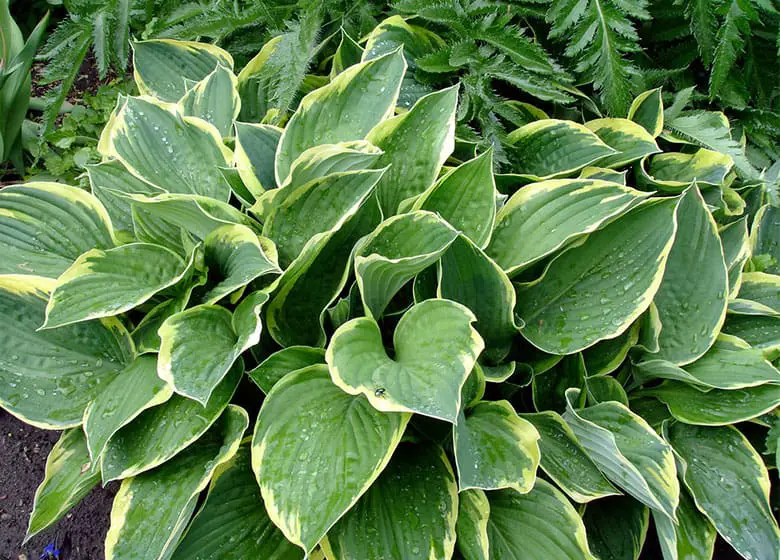
With their lush and densely packed foliage in an array of colors and patterns, hostas (Hosta spp.) add a green and luxurious appeal to poolside planters located in North and cooler portions of Central Florida.
With 40 species to select from and more than 1000 cultivars, there’s bound to be a hosta to fit everyone’s design desires. The large attractive leaves range in solid and variegated colors of green, white, blue and yellow, as well as heart-shaped, wedge-shaped, truncate and attenuate.
They work well in containers, planted in mass or used as filler plants. In summer, attractive and often fragrant spikes of flowers in colors of pink, white or lavender burst onto the scene, adding more appeal.
Clumps grow anywhere from 12 inches to 3 feet tall with a similar width. Hostas are hardy growing in shade to partial sun and in rich, well-drained soil.
Hibiscus
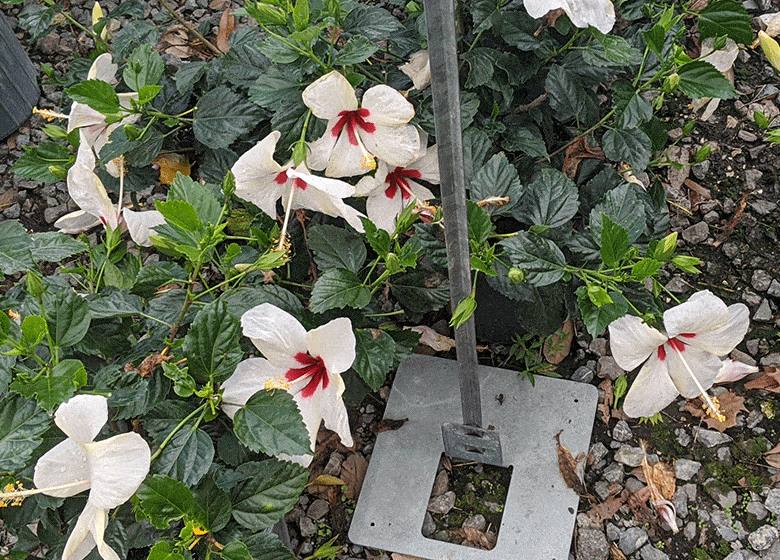
For an instant tropical appeal, you can’t go wrong using tropical hibiscus (Hibiscus rosa-sinensis) in your pool area planters or in containers. Hibiscus shrubs are sure to get attention with their glossy green, evergreen leaves and a year-round display of 4- to 8-inch diameter single or double flowers.
Depending on the variety, the big and bold flowers range in colors of red, yellow, purple, orange, white, pink, peach or a combination of several hues. Plants quickly achieve a mature height of 6 to 12 feet and a similar width.
Tropical hibiscus is hardy in Central and South Florida, although those in North Florida can grow it in containers and protect during winter. It grows best located in full sun to partial sun and in well-drained soils that are fertile.
Jade
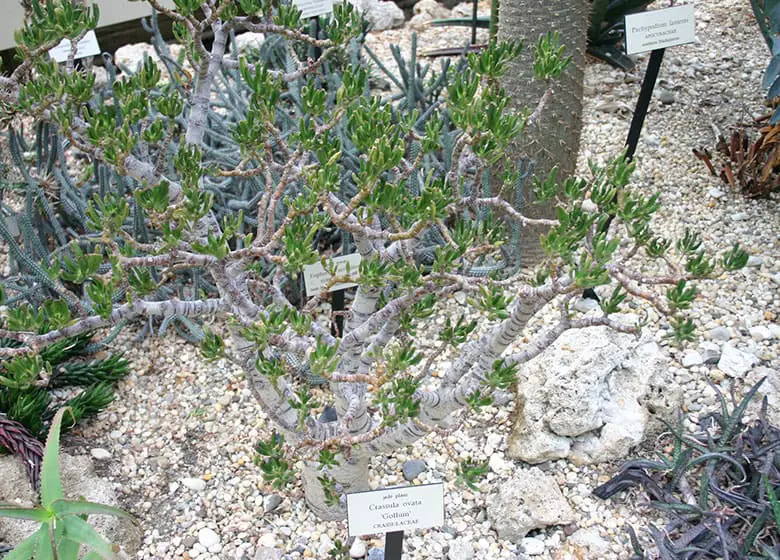
Whether used to dress up a container with their thick and green succulent foliage or planted in a poolside planter, jade plants (Crassula ovata) make perfect pool companions with their low-maintenance requirements to keep their good looks.
Their thick succulent branches are covered in the 2- to 4-inch, oval evergreen leaves attach to their dense and succulent trunk, with new plants rooting from fallen leaves. Jade plants grow 2 to 4 feet tall when mature and with a width of about half their height.
They are hardy year-round in frost-free areas of Central and South Florida and those in colder northern Florida should grow it in containers for winter protection. Jade plants perform well in full sun to partial shade and in well-drained soil.
Ornamental Grasses
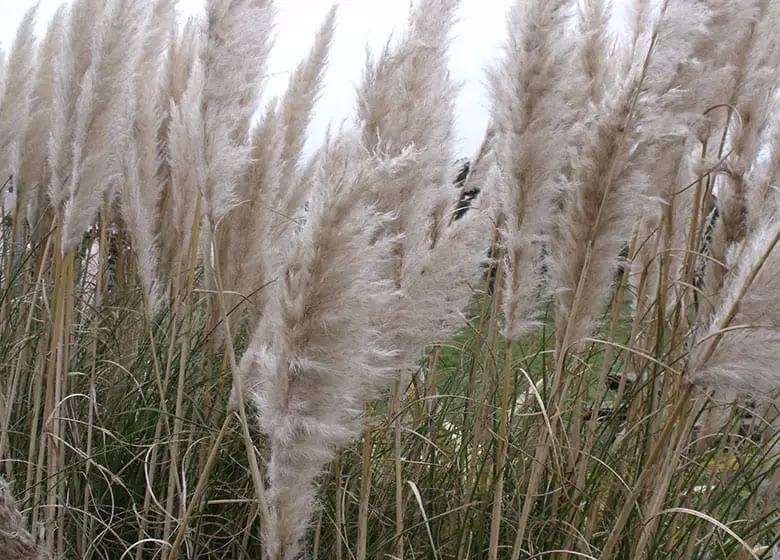
Gardeners throughout Florida have a wealth of choices in ornamental grasses that will add color, texture and style to poolside planters and areas just outside the pool area that add additional privacy.
Some ornamental grasses that work well in the area are purple lovegrass (Eragrostis spectabilis), 1 to 3 feet tall and wide, producing reddish-purple flowers year-round, and native Florida gama grass (Tripsacum floridana), 2 to 4 feet tall and wide, producing large clump and yellow summer flowers. Both produce the best growth planted in full sun and in well-drained soil and are hardy statewide.
Pindo
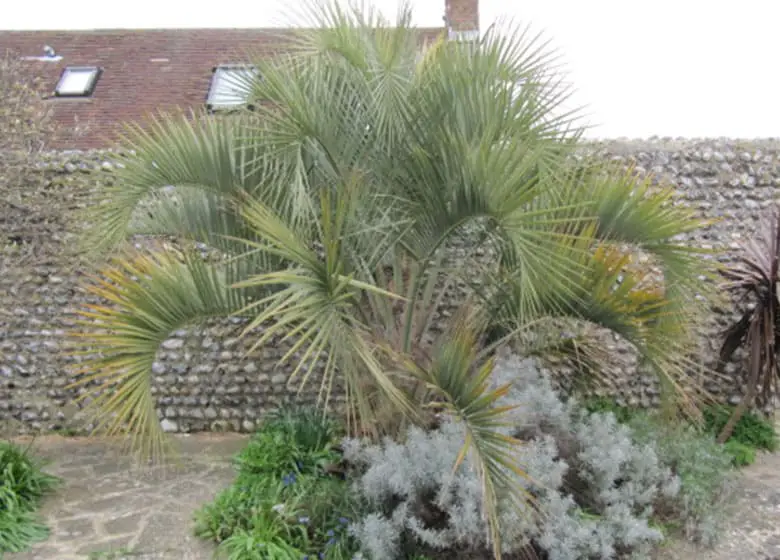
Pindo palms (Butia odorata) are hardy growing in all regions of Florida but puts on its best performance grown in the cooler climates of the state.
Also called jelly palm because of its edible fruit, pindo palms make a striking statement used in the pool area with their blue-green feathery fronds giving a silvery appearance.
This slow-growing Florida native grows around 20 feet tall at maturity and with a canopy spread of around 10 to 15 feet, so it requires a large space if planted inside a pool enclosure.
Pindo palms are hardy growing in full sun to partial shade and in well-drained soil.
Pygmy Date palm
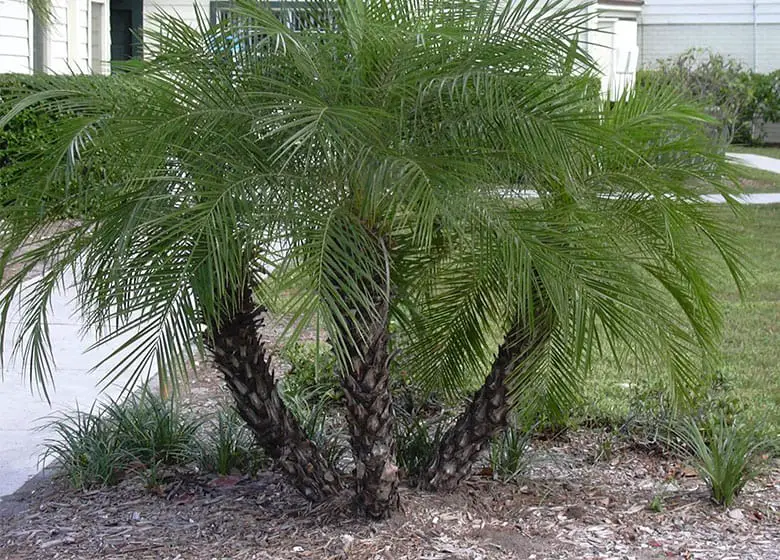
Pygmy date palms (Phoenix roebelenii) hold the honor of being one the most popular landscape palms, hardy in Central and South Florida.
Those living in North Florida can grow the palm in containers. The single-trunked palms are typically seen planted in groups of two or three, with their thorn-lined, feathery green fronds giving the palm a light and airy feel.
The palm works well in the poolside landscape but are probably best situated in a location away from traffic due to the nasty thorns. Pygmy date palms are sure to give the feeling of the tropics wherever used in or around the poolscape.
Allow adequate space in the area as the palm grows up to 12 feet tall at maturity and with a spread of 6 to 8 feet. It thrives in full sun to partial sun and in well-drained soil.
Schefflera
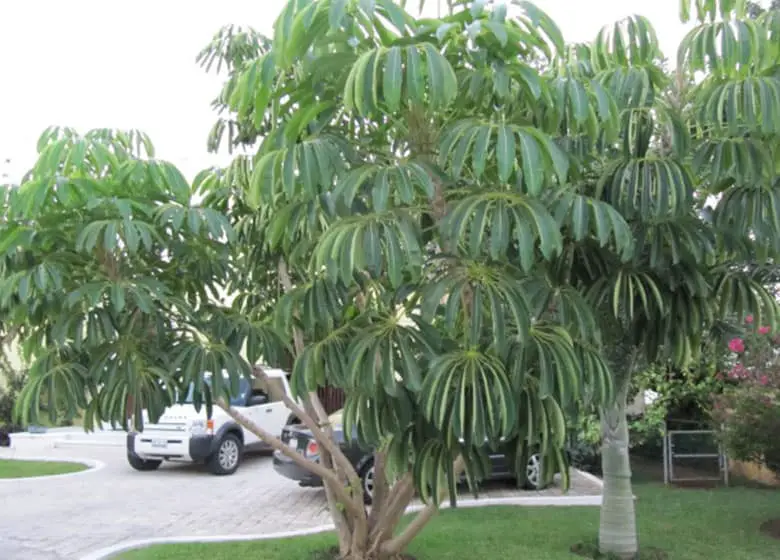
Whether used in the pool area in containers, planted in the landscape near the pool deck or enclosure or in a poolside planter in a large screened area, schefflera (Schefflera actinophylla) will certainly give a tropical feeling with its large, shiny green, palmate leaves.
It’s easy to see why it gets its common name umbrella tree, as the large leaves atop its bare trunks give the impression of a large umbrella. Plants average around 25 feet tall with a width of 10 to 15 feet, making Schefflera also suitable used for privacy or a windbreak.
If its natural tropical good looks weren’t enough, in summer, long panicles filled with a mass of small red berries add to the plant’s colorful interest. Schefflera is hardy in Central and South Florida, although those in colder northern portions of the state can grow it in containers.
It grows well in full sun to partial shade and in well-drained soil.
Your Pool’s Microclimate
When landscaping the area around your pool most people just choose plants they love and never think about the microclimate the area creates. Between the small walled in area, hardscaping, whether you have an added spa or hot tub along with the pool itself, an entire mini environment is created, which can affect your plants growth.
For example, hardscaping or decks, especially those that are darker in color absorb the sun’s heat, making the entire area around the pool warmer. Therefore, the entire area will be hotter than open areas of the landscape not covered in hardscape, and requires plants that tolerate hotter conditions.
Additionally, if the pool is heated or you have a hot tub located in the pool area, the warmth from the water floats up into the air, which increases the overall humidity in the area as well as creates warmer conditions.
Plants that thrive in the warm, humid conditions are best-suited growing in the pool area, which is why tropical plants thrive in a poolscape. You won’t want to use plants that prefer a cooler environment with less humidity.
Plants You Shouldn’t Plant Around Your Pool
Although plant selections suitable for using in and around a pool area are vast and varied, there are always exceptions. Whether due to a messy habit, invasive and extensive root systems, a thorny nature or other unwelcome habits of growth, there are some plants you should definitely steer away from when considering plants for your pool’s landscape.
Plants having invasive or aggressive root systems that can damage the pool as they seek out water include:
- Willows
- Ficus
- Mulberry
- Cottonwoods
- Silver Maple
- American Elm
- Jacaranda
- Sweet Acacia
Trees producing larger leaves and those that drop their foliage in fall can clog pool equipment, as well as trees producing needles that can also clog equipment.
Evergreens bearing needles and large deciduous trees
Plants covered in thorns should be avoid in areas where traffic occurs or visitors will constantly be brushing against them and being scratched by the thorny assassins. Examples include:
- Bougainvillea
- Pyracantha
- Holly
- Thorny Yuccas
- Cacti
By planting the right plant in the right place, you’ll be spending more time relaxing in the sun floating in your watery paradise than cleaning up messes and repairing damage
You Might Also Be Interested In:
